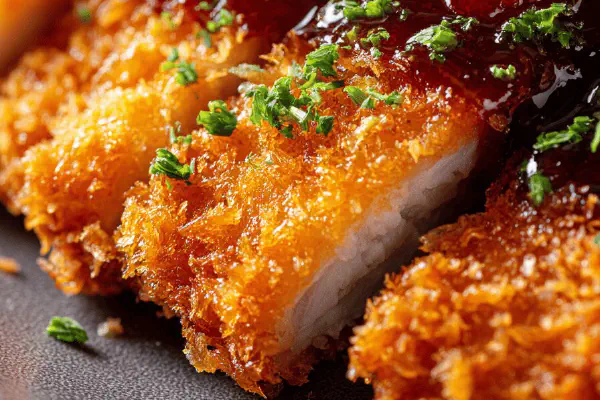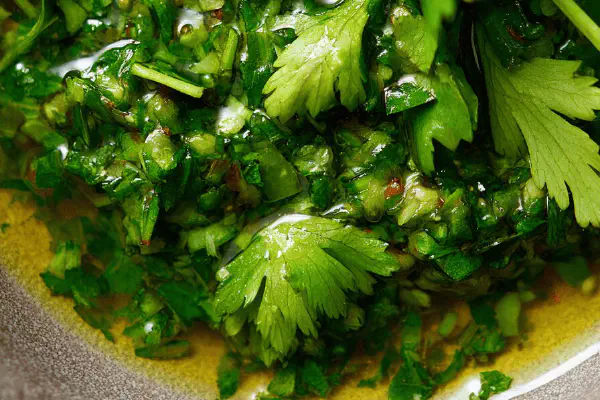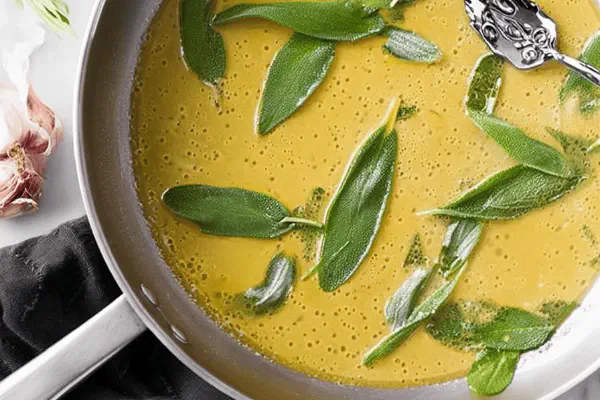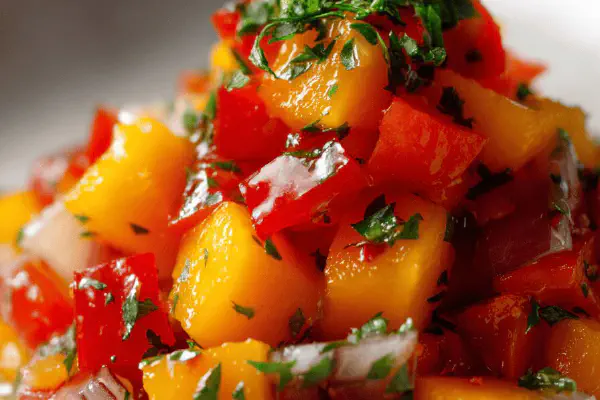Tangy Tonkatsu Sauce

E
By Emma
Certified Culinary Professional
•
Recipe tested & approved
A tangy, sweet, and slightly spicy sauce for pork dishes. Uses fruit juices, dried fruits, and spices for depth. Thickened with cornstarch. Modified quantities and ingredients for balance. Caramelized sugar adds richness. Blend then strain for a refined texture. Chill to develop flavor. Works great with fried pork cutlets or as a dipping sauce.
Prep:
20 min
Cook:
25 min
Total:
45 min
Servings:
750 ml
#sauce
#Japanese
#condiment
Sweet, sour, spicy. Fruit and vinegar spun into a thick sauce. Fruits not just sweetness—layers of flavor. Less cling than syrup, more bite than ketchup. Date and apricot swapped for prune, allspice swaps clove for warm undertone. Caramelizing sugar first builds deep notes, less harsh than straight sugar dump. Blending, straining, patience—the work pays off in a sauce thick, velvety, with speckled fruit hints. Keep it chilled, the flavors knit together. Great over pork or as dipping sauce. Mirin swapped with sake—less sweetness, more edge. Orange juice stands in for clémentine. Simple tweaks but big shifts. Takes about 45 minutes but worth the wait. No eggs, no dairy, purely vegan-friendly. Tangy but rounded overall.
Ingredients
- 7 ml (1 ½ tsp) cornstarch
- 150 ml (⅔ cup) water, divided
- 110 ml (7 tbsp) mandarin orange juice
- 100 ml (½ cup - slightly less) soy sauce
- 80 ml (5 tbsp plus 1 tsp) rice vinegar
- 75 ml (a little less than ¼ cup) sake
- 2 medium fresh tomatoes, diced
- 1 medium onion, finely chopped
- 1 small pear, peeled, cored, diced
- 4 dried apricots, chopped (replaces prune)
- 3 Medjool dates, pitted and chopped
- 15 ml (1 tbsp) tomato paste
- 3 ml (½ tsp) ground ginger
- 1 ml (¼ tsp) ground allspice (replaces clove)
- 0.5 ml (1/8 tsp) cayenne pepper
- 50 ml (3 tbsp plus 1 tsp) demerara sugar
About the ingredients
Using more water than usual helps balance the sauce and keeps it pourable. Swapping sake for mirin cuts down on the sugar content and adds a slight acidity, matching the tartness from the rice vinegar. Fresh tomatoes bring tang while dried apricots replace prune to avoid overpowering richness but maintain fruity depth. Dates contribute sweetness and texture. Allspice replaces clove for subtle warmth without dominating the palate. Caramelizing demerara sugar brings sweetness and a roasted, deep flavor without bitterness. Cornstarch dissolved in water thickens the sauce without lumps. Use freshly squeezed mandarin or orange juice. Adjust fruit sizes or types depending on availability but follow the balance of sweet, sour, spicy for best results.
Method
- Dissolve cornstarch in 15 ml (1 tbsp) cold water. Set aside.
- Combine mandarin juice, soy sauce, rice vinegar, sake, tomatoes, onion, pear, apricots, dates, tomato paste, ginger, allspice, and cayenne in a bowl. Let sit while preparing sugar.
- In a small saucepan, slowly heat demerara sugar over low heat without stirring, about 3 min, until it melts and turns amber. Stir gently once caramelization begins.
- Quickly add fruit and liquid mixture to melted sugar. Bring to boil over medium heat. Reduce heat and simmer for 12 minutes, uncovered.
- Stir in the cornstarch slurry steadily. Simmer gently for 2 minutes to thicken.
- Transfer sauce to blender. Puree until smooth. Pass through fine mesh sieve into a bowl.
- Allow to cool at room temperature, about 20 minutes. Cover and refrigerate until fully chilled, roughly 2.5 hours.
- Shake or stir before serving. Refrigerate up to one week.
Cooking tips
Begin by mixing cornstarch slurry in a small bowl separate from the rest to prevent lumps. Soak the dried fruits briefly if very hard before chopping for better blend. Combine all bulky ingredients for flavor layering while melting sugar to save time. Heating sugar low and slow prevents burning and bitterness. When caramel amber is achieved, swiftly add the rest to stop sugar from solidifying. Bring to boil, then lower heat and simmer uncovered—concentrates flavors and softens ingredients. Add cornstarch slurry last to thicken gently; overcooking after starch addition risks breaking down and thinning sauce. Blend thoroughly to a fine puree for the signature silky texture. Pass through sieve to remove bits for smoothness. Allow to cool before refrigerating; flavors mellow and thicken further overnight. Shake well before use. Store in a sealed container. Reheat gently if needed, but best served cool or room temp.
Chef's notes
- 💡 Cornstarch slurry important. Mix it separately. Prevent lumps. This ensures a smooth sauce. Gets thick without clumps. Work quickly with it too.
- 💡 Caramelizing sugar requires patience. Low heat is essential. Watch it closely. Stir gently at times. Stop burning. This deepens the flavor greatly.
- 💡 Fresh fruits add freshness. Use ripe tomatoes. Chang up pears if needed. Choose fruits based on local availability. Maintain balance between sweet and tart.
- 💡 When blending, go all the way. Ensure everything purees nicely. Pass through a fine sieve. Takes away bits. Important for smooth texture in the end.
- 💡 Cool sauce is key. Let it develop flavors in the fridge. Time to chill matters a lot. Store well in a sealed container. Keeps it fresh longer.
Common questions
What if my sauce is too thick?
Add water gradually. Adjust thickness. Avoid clumping but fix the pourability. Not difficult. Make it work.
Can I substitute any ingredients?
Sure, use other fruits. But balance sweet and tang is key. Sake could swap out with rice wine too. Keep the essence.
How long will this sauce last?
In fridge about a week. But check for appearance. Never use if smell off. Fresh is best. When in doubt, toss.
Can I freeze this sauce?
Yes, freezing is fine. Use airtight containers for storage. Portions can help later. Thaw gently before using. Always check quality.



